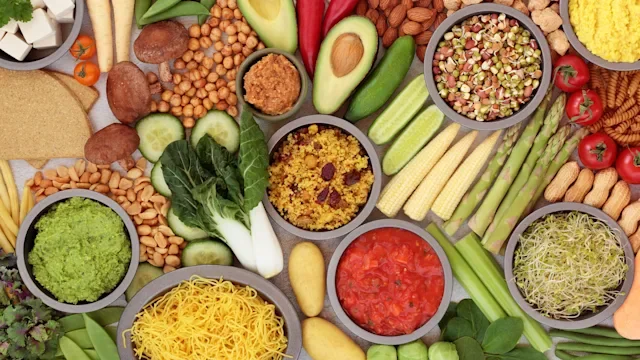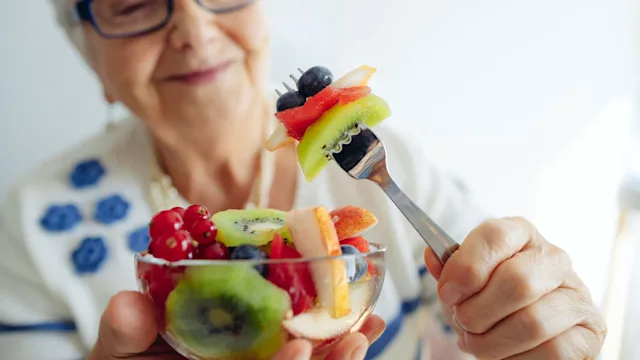Key takeaways:
Processed foods are convenient and affordable choices. It’s not realistic to avoid processed food altogether.
Cutting back on ultra-processed foods is better for your health. This is because they are often loaded with sugar and other additives and lack important nutrients.
There are some tips you can try to eat more fresh, whole foods. These include learning to cook a few dishes at home, stocking your fridge with fresh fruit for a snack, and prepping ingredients to save time when cooking.
Let’s be real: Processed foods are easy and convenient. Odds are low that you’re going to avoid all processed foods — even though they sometimes get a bad reputation.
Processed foods have their place, and there’s no reason to cut them out completely. Diets without processed foods can lack diversity and may increase malnourishment in food-insecure communities.
A more realistic goal might be to try to eat fewer ultra-processed foods, which are the most extreme form of processed foods. Ultra-processed foods, such as frozen dinners and packaged cookies, make up almost 60% of our diet.
Read on for some ways to cut down on processed ingredients — without spending hours in the kitchen.
What are processed foods?
Processed foods are any food that has been altered in any way. The term is very broad and can include minimally processed foods that have simply been washed, chopped, or frozen. Or it can include foods that have been ground, crushed, refined, or milled, for example.
Often when people talk about unhealthy processed foods, they’re referring to ultra-processed foods. These are foods that are so heavily altered they have very few nutrients left in them, and often contain added sugar and salt.
How to avoid processed foods
You don’t have to cut out all processed foods to improve your diet. The key is to have a well-rounded diet, focusing on foods in their natural form when you can. The good news is that making a few adjustments can have you eating and feeling better. Here are nine tips to help you swap out heavily processed foods for more nourishing options.
1. Have fruit ready to grab
Choose whole fruit instead of fruit juice or fruit products, such as apple sauce. The processed varieties often have the fiber stripped out of the fruit and include added sugar.
Having a bowl of fruit on the counter makes it easy to reach for a handful of blueberries with breakfast or a banana for a snack.
Best frozen dinners: Here’s what to look for when choosing nutritious frozen dinners on nights when you don’t have time to cook.
Whole grains: What are the best whole grains and why are they so good for you?
What’s the difference between processed and ultra-processed? Learn the differences between minimally processed and highly processed food, and what to look for.
2. Crack an egg
Instead of cereal or sweetened yogurt, consider eating a whole egg or two for breakfast. Eggs may help you feel more satisfied until lunch. This is because they’re considered a complete protein, containing all nine essential amino acids (building blocks of protein). Eggs also provide a variety of vitamins and minerals. But to get all those health benefits, you need to eat the entire egg — yolk included.
In less than 10 minutes, you can make scrambled eggs or an omelet. You can also prep a veggie-packed egg bake that you can heat up for a few days to get breakfast on the table quickly. Use frozen vegetables to cut down on time spent chopping.
3. Develop a specialty
Learn to cook a few meals at home. Having some basic cooking skills is linked to a lower consumption of ultra-processed foods. Just having a couple of go-to recipes could have you eating healthier and feeling more confident cooking whole foods, such as fruits and vegetables, whole grains, and lean protein.
Read more like this
Explore these related articles, suggested for readers like you.
A few recipes to try:
Chicken stir-fry: Cut your own veggies — such as onions, bell peppers, and broccoli — and cook them in a pan with chicken. Serve with whole-grain rice.
One-pan salmon and veggies: Roast salmon and veggies, like broccoli and zucchini, on the same sheet pan. Cook the veggies at 400°F for about 10 minutes. Then add the salmon and cook for another 12 to 15 minutes.
Grain bowl: Grain bowls can be customized to any way you like it. Use your favorite whole grain, protein, and vegetables for a delicious and filling meal.
4. Chop ahead
Prep your ingredients. Spending time in one sitting chopping vegetables, cutting up a rotisserie chicken, and mixing up a salad dressing can save you time later in the week. By prepping your ingredients ahead of time, you can still get dinner on the table quickly on busy weeknights.
Bonus: Your chopped veggies come in handy as quick, healthy snacks.
5. Work your freezer
Make your own frozen meals. When you make a casserole or lasagna, prep two. Put one in the freezer to pull out when you need a frozen dinner. You control the ingredients that go into your frozen meals and only have to clean up the kitchen once.
6. Assemble your own ‘packaged’ foods
Instead of buying little containers of flavored yogurt, sugary cereals, or oatmeal packets, make your own. It only takes 2 minutes to heat oats and water in the microwave. (Use a bigger bowl than you think you need to avoid a spillover mess.) Add a spoonful of nut butter and some diced apple.
You can also make your own granola using a natural sweetener such as honey or just a sprinkle of cinnamon. To recreate a flavored yogurt, stir in some blueberries or other fruit you enjoy to add some sweetness to plain yogurt.
7. Savor a satisfying (homemade) beverage
Sugar-sweetened drinks may quench your thirst, but they also come with a hefty dose of sugar. Instead of sweetened iced tea, sodas, or a sweet coffee drink, consider:
A smoothie with peanut butter, spinach, and banana instead of juice: Juicing removes the filling fiber. But blending a veggie, fruit, and some nut butter gives you fiber, healthy fat, and protein.
Fruit-infused water instead of soda: Start with tap or sparkling water and try different fruit combos, such as watermelon and mint, or cucumber and melon.
Back-to-basics coffee: Find a delicious brew of coffee you can drink black or with just a splash of milk instead of sugar-filled coffeehouse specialties.
8. Read and compare food labels
Even though some foods are vegan, organic, or gluten free, that doesn’t mean they’re necessarily unprocessed or healthy. Think critically about marketing by paying attention to nutrition labels. Keep an eye out for added sugar, salt, or ingredients you’ve never heard of before.
9. Limit eating out
Eating out can be a treat, but if you eat out too often, you may be eating a less nutritious diet. Dining out has been linked to a diet with:
Higher calorie intake
Higher saturated fat intake
Higher sugar and salt intake
Lower intake of fiber
Lower intake of dairy
Lower intake of fruit and vegetables
Higher intake of alcohol
If you like eating out, you can try to be more conscious of what you’re ordering, but it’s often difficult to control things like how much butter and salt are in dishes. If you eat out a lot or get takeout from restaurants, consider having home-cooked meals more often.
Processed foods to avoid
The main types of processed foods to avoid are ultra-processed foods. They often lack fiber, vitamins, and minerals that would be available in whole foods or minimally processed versions. Examples of ultra-processed foods include:
Soda and energy drinks
Packaged snacks, sweets, and breads
Processed meats, such as sausages and hot dogs
Candy and ice cream
Prepackaged foods, such as frozen pizzas
Sweetened yogurt and breakfast cereals
You can recognize ultra-processed foods because they:
Include ingredients you don’t have in your kitchen, such as cellulose powder or high-fructose corn syrup
Are designed in a lab to be appealing and taste exactly the same every time
Are often high in sugar, fat, and sodium
Often come in eye-catching packaging and are heavily advertised
Why are processed foods bad?
Diets higher in ultra-processed foods have been associated with:
Increased risk of breast cancer
Higher risk of Type 2 diabetes
Frequently asked questions
The most processed foods tend to have almost no nutrients. They also tend to be high in sugar or salt. The most processed foods include soda, candy, flavored potato chips, instant ramen, and packaged baked goods.
Instead of eating highly processed foods, choose foods in their most natural form. Eat whole fruits and vegetables and whole grains like brown rice or oatmeal. Eggs and unsweetened dairy products are considered minimally processed as are meat, chicken, and fish that aren’t presalted or prepared.
Refined grains are grains that have been milled to create a finer texture. But it also removes fiber and certain nutrients. Examples of refined grains are white flour, white bread, and white rice. Whole grains haven’t been milled, so they contain more fiber and nutrients. These include oats, brown rice, quinoa, and many others.
The most processed foods tend to have almost no nutrients. They also tend to be high in sugar or salt. The most processed foods include soda, candy, flavored potato chips, instant ramen, and packaged baked goods.
Instead of eating highly processed foods, choose foods in their most natural form. Eat whole fruits and vegetables and whole grains like brown rice or oatmeal. Eggs and unsweetened dairy products are considered minimally processed as are meat, chicken, and fish that aren’t presalted or prepared.
Refined grains are grains that have been milled to create a finer texture. But it also removes fiber and certain nutrients. Examples of refined grains are white flour, white bread, and white rice. Whole grains haven’t been milled, so they contain more fiber and nutrients. These include oats, brown rice, quinoa, and many others.
The bottom line
It’s difficult to avoid processed foods altogether, and that’s OK. Rather than vowing to give up all processed foods, consider making some simple swaps. For example, try drinking fruit-infused water instead of soda and choosing whole fruits instead of packaged fruit products. Making these small changes can reduce the amount of sugar and other processed ingredients in your diet.

Why trust our experts?



References
AskUSDA. (2024). What are refined grains? U.S. Department of Agriculture.
Bazzano, L. A., et al. (2008). Intake of fruit, vegetables, and fruit juices and risk of diabetes in women. Diabetes Care.
British Medical Journal Group. (2019). New evidence links ultra-processed foods with a range of health risks.
Fiolet, T., et al. (2018). Consumption of ultra-processed foods and cancer risk: Results from NutriNet-Santé prospective cohort. British Medical Journal.
FoodData Central. (2019). Eggs, grade A, large, egg whole. U.S. Department of Agriculture.
Garcia, A. L., et al. (2016). Community interventions to improve cooking skills and their effects on confidence and eating behaviour. Current Nutrition Reports.
Lam, M. C. L., et al. (2017). Association between home food preparation skills and behaviour, and consumption of ultra-processed foods: Cross-sectional analysis of the UK National Diet and nutrition survey (2008–2009). International Journal of Behavioral Nutrition and Physical Activity.
Levy, R. B., et al. (2021). Ultra-processed food consumption and type 2 diabetes incidence: A prospective cohort study. Clinical Nutrition.
Monteiro, C. A., et al. (2019). Ultra-processed foods, diet quality, and health using the NOVA classification system. Food and Agriculture Organization of the United Nations.
Steele, E. M., et al. (2021). Ultra-processed foods and added sugars in the US diet: Evidence from a nationally representative cross-sectional study. British Medical Journal Open.
Weaver, C. M., et al. (2014). Processed foods: Contributions to nutrition. The American Journal of Clinical Nutrition.
















